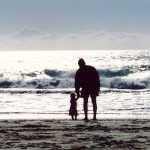Some years ago I look a five week course in the Alexander technique to help me relax. The Alexander Technique “teaches people how to stop using unnecessary levels of muscular and mental tension during their everyday activities”. It is often used by people with back problems. Indeed there was a lady in the group who suffered from scoliosis and she hoped that the technique would be of assistance.
This was the first but not the last time that I have come across Scoliosis in my professional and personal life.
Scoliosis is simply an abnormal curvature of the spine. It should be noted that the effects and severity can be very different from person to person.
How common is it? Until recently it was thought that Scoliosis was a condition which developed in childhood. While 0.30% of children are born with Scoliosis it now seems that it may develop in older people but only to a very minor degree.
The causes of Scoliosis really vary but in around 80% of cases they are simply unknown. However people with Marfan syndrome, cerebral palsy, muscular dystrophy and Neurofibromatosis are all at higher risk.
Typical signs of Scoliosis are:-
1) Visible curvature of the spine. The lady at the group I was in did not have this.
2) A tendency to lean to one particular side
3) Clothes not hanging correctly
4) There are some cases of bowel and bladder problems.
Back pain seems to be common with adults with Scoliosis. You can read more about back pain at a previous blog https://patienttalk.org/?p=389.
A lot of children, with mild symptoms, simply grow out of Scoliosis. In some more severe occurrences a back brace can be used to help straighten the spine. Unfortunately this can cause body image issues especially for adolescents. It should be noted that surgery for children with Scoliosis is very rare.
With adults who have back pain various pain killers are often employed.
As well as raising awareness of Scoliosis one of the objectives of this blog post is to provide our readers with a space they can use to share their experiences.
It would be great if you could use the comments box below to tell us a bit about how Scoliosis has impacted you and your family. It would be great if you could consider the following questions:-
a) What were your signs of Scoliosis? At what age was the diagnosis of Scoliosis made?
b) Did you need treatments? How effective were these treatments?
c) Has Scoliosis had any long term effects on your lifestyle?
d) Is there one piece of advice you would give to somebody whose child has been diagnosed with Scoliosis?
There questions are really only suggestions. Anything would want to share about Scoliosis would be of great interest to our readers.
Thanks very much in advance.

Hi, I have also scoliosis and was diagnosed around 9 years. I started having back pain, I was doing cross country. I was evaluated by á person who build up shoes and he noticed that my left leg was shorter than my right leg. He took a loot at my mom and also notice that her one leg is shorter than the other. We had x-ray’s taken to measure the difference in my legs as well as x-ray’s of my back. My spine is in the shape of a “S”. The doctors found that there was difference in the lengths of the upper and lower parts of my legs. My left school shoes was build up and special inserts were made for my running shoes. I also started doing additional back exercises to strengthen the different muscles of my back. I continued with cross country and athletics until I was 21 years old (had to stop because I injured my back) I had a back operation to fix a cushion between L4 and L5. I am allowed to run again and did run after a few months after the operation. I still build up my left shoes or put a special made sole in my shoes, the inserts is only 1 cm but help me a lot. I do not suffer from any back pain due from the scoliosis or the operation.
I was diagnosed with scoliosis when I was 9 years old. By the time I was 10 it was so severe that I was told I had to have surgery. In January 1991 at the age of 11 I had a steel rod placed along my spine. I haven’t had much in the way of long term effects, There are certain ways I cannot bend. but that is about it. When I had my son the doctors told me if I wanted an epideral for pain I had to be evaluated to make sure it could be done because of where my spine had been fused together is where the epideral goes in. but they told me that could be put in another place so everything ended up okay. The only advice I have for parents is to keep an eye on you child’s spine. Watch for dropping shoulders, which is what my right one did. Other than that just be vigilant, and if you do notice something see your pediatrician and get it checked out.